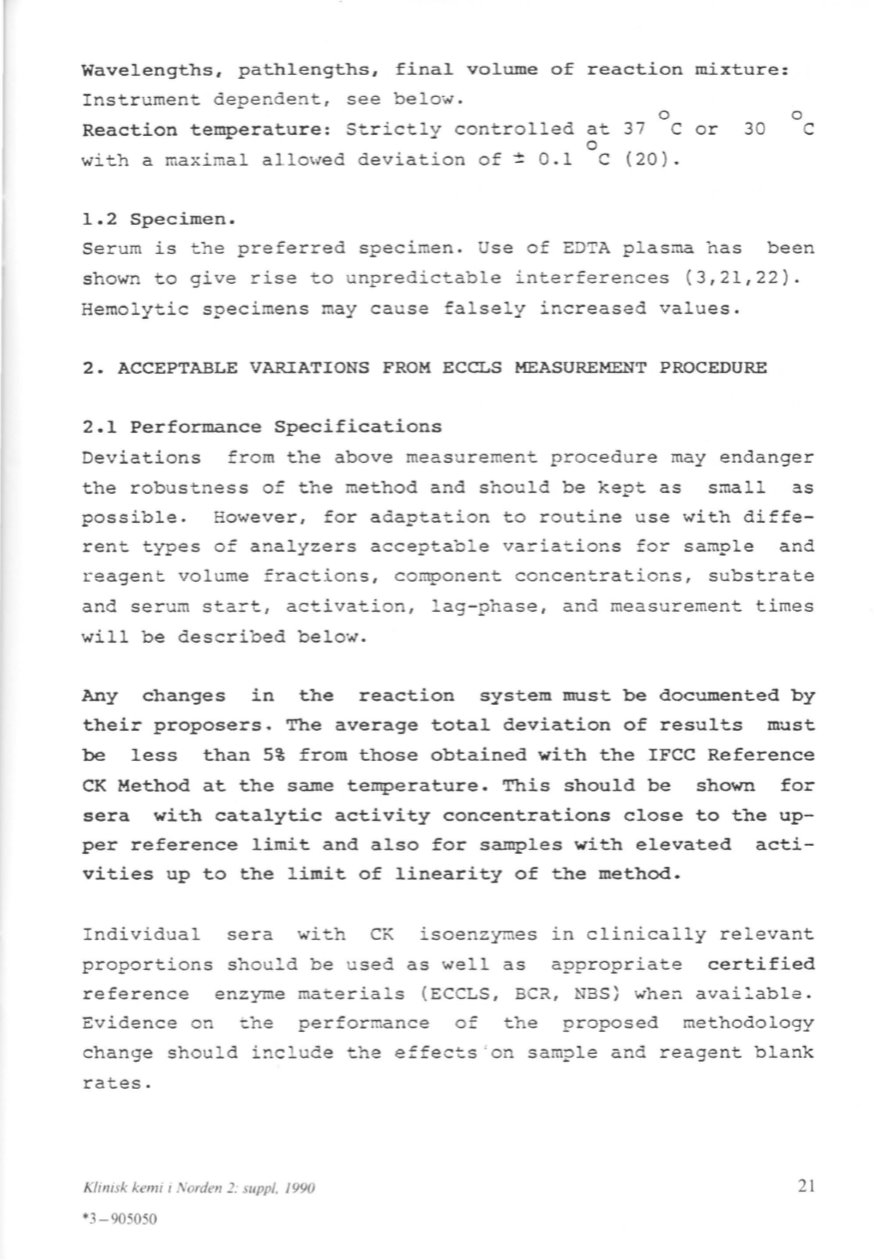
Wavelengths, pathlengths, final volume of reaction rnixture:
Instrument dependent, see below.
o
o
Reaction temperature: Strictly controlled at 37 C or 30
C
o
with a maximal allowed deviat i on
of~
0.1 C (20).
1.2 Specimen.
Serum is the preferred specimen. Use of EDTA plasma has been
shown to give rise to unpredictable interferences (3,21,22).
Hemelytic specimens may cause falsely increased values.
2. ACCEPTABLE VARIATIONs FROM ECCLS MEASUREMENT PROCEDURE
2.1 Performance Specifications
Deviations from the above measurement procedure may endanger
the robustness of the method and should be kept as small as
possible. However, for adaptation to routine use with diffe–
rent types of analyzers acceptable variations for sample and
reagent volume fractions, cornponent concentrations, substrate
and serum start, activation, lag-phase, and measurement times
will be described below.
Any changes in the reaction system must be documented by
their proposers. The average total deviation of results must
be
less than 5% from those obtained with the .IFCC Reference
CK Method at the same ternperature. This should be shown for
sera with catalytic activity concentrations close to the up–
per reference limit and also for samples with elevated acti–
vities up to the limit of linearity of the method.
Individual sera with CK isoenzymes in clinically relevant
proportions should be used as well as appropriate certified
reference enzyme materials (ECCLS, BCR, NBS) when available.
Evidence on t h e performance of the proposed methodology
change should include the effects ' on sample and reagent blank
rates.
Klinisk kemi
i
Norden 2: suppl, 1990
21
*3 - 905050


